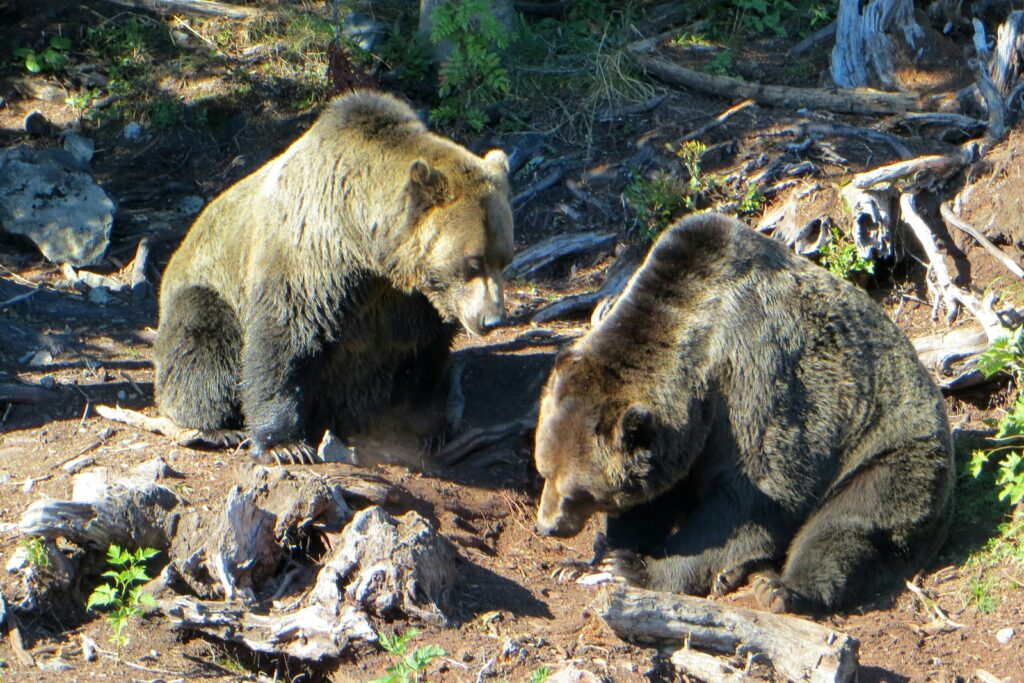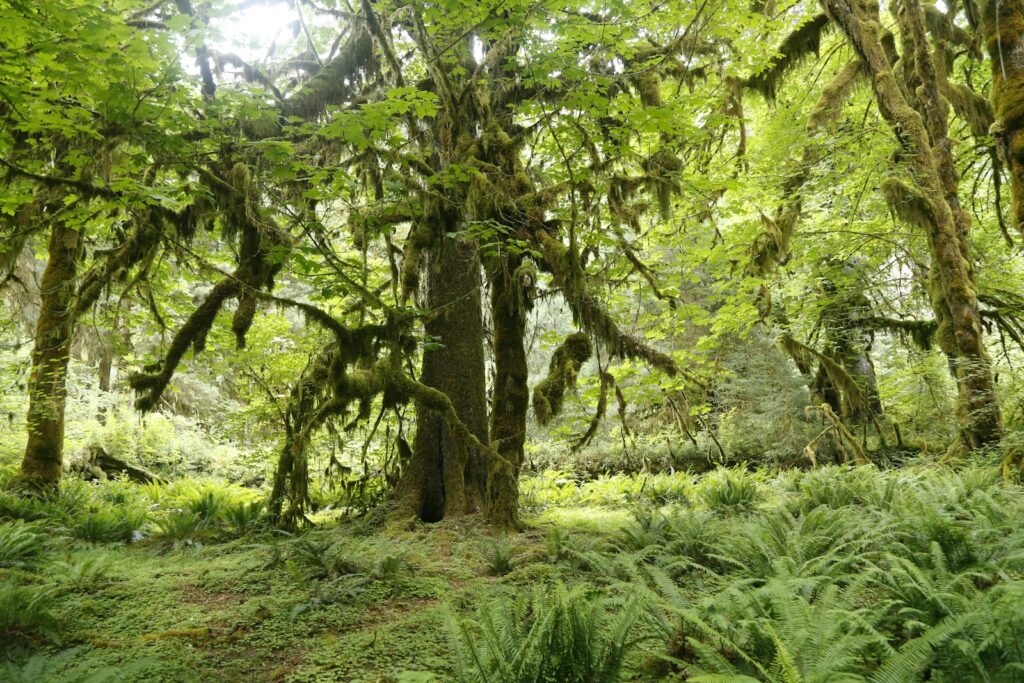National parks serve as sanctuaries for some of America’s most precious wildlife, preserving biodiversity and ecosystem health for future generations. The legal frameworks that protect these natural treasures have evolved significantly over the past century, creating a complex but vital shield for vulnerable species and their habitats. From foundational legislation to modern conservation approaches, these laws work in concert to balance public enjoyment of parklands with the imperative to protect the wild creatures that call these places home.
This article explores the most impactful conservation laws that safeguard wildlife within our national park system, examining how they function and why they matter in an era of increasing environmental challenges.
The National Park Service Organic Act of 1916

The cornerstone of wildlife protection in national parks began with the Organic Act, which established the National Park Service and its dual mission to conserve park resources while providing for public enjoyment. This foundational legislation specifically mandates that wildlife and natural resources must be maintained “unimpaired for the enjoyment of future generations,” establishing conservation as a primary objective rather than an afterthought. The Act’s language has been interpreted by courts to prioritize resource protection when conflicts arise between conservation and recreation.
This legislation created the legal backbone that supports all subsequent wildlife protection efforts, giving park managers the authority to implement conservation measures that might otherwise be challenged. Without this clear conservation mandate, many species that thrive in parks today might have disappeared due to unchecked development or exploitation.
The Endangered Species Act of 1973

Perhaps the most powerful wildlife protection law in American history, the Endangered Species Act (ESA) provides crucial safeguards for threatened and endangered species regardless of economic consequences. Within national parks, the ESA takes on special significance, requiring park managers to prioritize the recovery of listed species through habitat protection, predator control, breeding programs, and other conservation measures. The law’s strength comes from its absolute prohibitions against harming protected species, backed by significant penalties for violations.
The ESA has been directly responsible for numerous wildlife recovery success stories in national parks, including the reintroduction of gray wolves to Yellowstone and the protection of the California condor in parks of the Southwest. Beyond protecting individual species, the ESA has helped preserve entire ecosystems within parks by creating “umbrella protection” for habitats that support multiple species.
The Lacey Act of 1900

As America’s first federal wildlife protection law, the Lacey Act continues to play a vital role in protecting national park wildlife from illegal exploitation. This pioneering legislation prohibits trade in wildlife, fish, and plants that have been illegally taken, possessed, transported, or sold, creating powerful disincentives for poaching within park boundaries. The Act’s scope was significantly expanded in 2008 to include a wider range of plants and plant products, strengthening protection for park vegetation that provides critical wildlife habitat.
Park rangers and conservation officers regularly use the Lacey Act to prosecute wildlife trafficking cases, helping to disrupt criminal networks that target rare species. The law’s penalties can be substantial, including fines up to $250,000 for individuals and $500,000 for organizations, plus potential imprisonment, making it a serious deterrent against wildlife exploitation in parks.
The Migratory Bird Treaty Act of 1918

National parks serve as critical havens for migratory birds, and the Migratory Bird Treaty Act (MBTA) provides these avian travelers with essential legal protections throughout their journeys. The MBTA makes it unlawful to pursue, hunt, take, capture, or kill protected migratory birds without authorization, creating a nearly comprehensive shield for most native bird species. For national park wildlife managers, this law provides authority to restrict activities that might disturb nesting sites, feeding grounds, or migratory stopovers within park boundaries.
The law’s international treaty foundation, involving agreements with Canada, Mexico, Japan, and Russia, recognizes that effective bird conservation requires multinational cooperation. Through consistent enforcement of the MBTA, national parks have become crucial sanctuaries where birds can breed, feed, and rest without human interference, maintaining healthy populations of species that might otherwise decline.
The Marine Mammal Protection Act of 1972

Coastal and marine national parks benefit tremendously from the Marine Mammal Protection Act (MMPA), which established a federal responsibility to conserve marine mammals and their ecosystems. This comprehensive legislation prohibits the taking of all marine mammals in U.S. waters, including harassment, hunting, capturing, collecting, or killing these animals. In parks like Channel Islands, Olympic, and Glacier Bay, the MMPA has enabled the recovery of sea lion, seal, sea otter, and whale populations that were once decimated by hunting and commercial exploitation.
The law specifically mandates that marine mammals be maintained at their optimum sustainable population levels, giving park managers a clear conservation standard to work toward. By establishing protective buffer zones around marine mammal habitats within park waters, managers can ensure these charismatic species have the space and resources they need to thrive.
The Wilderness Act of 1964

Many national parks contain designated wilderness areas that receive the highest level of habitat protection under American law, directly benefiting wildlife through the Wilderness Act’s stringent restrictions. These areas are managed to remain “untrammeled by man,” where natural processes operate without human manipulation and wildlife can exist in truly natural conditions. The Act prohibits roads, vehicles, permanent structures, and other development that might fragment or degrade wildlife habitat, creating large connected spaces where animals can roam freely.
For wide-ranging species like grizzly bears, wolves, and mountain lions, wilderness designation within parks provides critical security from human disturbance and development. Research has consistently shown that wilderness areas support greater biodiversity and more stable wildlife populations than non-wilderness areas, making this designation a powerful conservation tool within the national park system.
The Clean Water Act of 1972

Healthy aquatic ecosystems form the foundation of many national park food webs, making the Clean Water Act (CWA) an essential indirect wildlife protection mechanism. By regulating the discharge of pollutants into waters and establishing water quality standards, the CWA helps ensure that park waterways remain suitable habitat for fish, amphibians, and the numerous species that depend on them. The Act’s wetland protection provisions have been particularly important for preserving critical wildlife habitat in parks like Everglades and Congaree, where healthy wetlands support extraordinary biodiversity.
Park managers use CWA authority to address threats from adjacent land uses that might introduce contaminants or excess nutrients into park waters. Through consistent application of CWA standards, national parks have maintained some of America’s cleanest and most ecologically intact waterways, supporting thriving populations of sensitive species that have disappeared from more developed areas.
The National Environmental Policy Act of 1969

When development or management actions are proposed that might affect park wildlife, the National Environmental Policy Act (NEPA) ensures that potential impacts are thoroughly studied and disclosed to the public. This procedural law requires federal agencies to prepare detailed environmental assessments or environmental impact statements for major actions, forcing consideration of wildlife impacts before decisions are made. NEPA has repeatedly enabled conservation advocates to challenge harmful projects in or near national parks by revealing scientific evidence of potential harm to wildlife populations.
The law’s public comment requirements give wildlife biologists, conservation organizations, and concerned citizens a voice in park management decisions. While NEPA doesn’t mandate specific conservation outcomes, its procedural requirements have frequently resulted in modified projects that reduce wildlife impacts or in the abandonment of particularly harmful proposals, making it an important tool in the wildlife protection toolkit.
The Bald and Golden Eagle Protection Act of 1940

America’s national symbol receives special legal protection that extends throughout the national park system through the Bald and Golden Eagle Protection Act. This specialized wildlife law prohibits the “taking” of eagles, including disturbance of nests or disruption of breeding activities, with substantial penalties for violations. In parks that host eagle populations, this law has enabled managers to establish protective buffer zones around nesting sites and to restrict potentially disturbing recreational activities during sensitive breeding periods.
The Act’s strict liability provisions mean that even unintentional harm to eagles can result in prosecution, creating strong incentives for careful management. Thanks in part to this focused legal protection, bald eagles have made remarkable recoveries in many national parks, including Olympic, Acadia, and Voyageurs, where they now serve as flagship species that attract wildlife enthusiasts while fulfilling their ecological roles as top predators.
Park-Specific Enabling Legislation

Many national parks benefit from customized wildlife protections established in their individual enabling legislation—the specific laws passed by Congress to create each park. These park-specific laws often contain provisions tailored to the unique wildlife conservation challenges of the area, providing managers with additional authorities beyond general conservation laws. For example, Yellowstone’s enabling legislation specifically prohibits hunting within park boundaries, a provision that has been essential for protecting the park’s iconic wildlife.
Everglades National Park’s enabling legislation specifically mentions the preservation of the abundant bird life and other wildlife as a primary purpose of the park, giving managers clear authority to prioritize wildlife protection. When conservation efforts are challenged, these specific legislative mandates often provide the strongest legal foundation for defending wildlife protection measures, as they represent Congress’s explicit intent for the management of each park unit.
Park Regulations and Superintendent’s Compendium

While major legislation provides the framework for wildlife protection, the day-to-day management of wildlife interactions often relies on park-specific regulations documented in each park’s Superintendent’s Compendium. These regulations address issues like proper food storage to prevent wildlife habituation, minimum wildlife viewing distances, fishing regulations, and restrictions on pets or noise in sensitive wildlife areas. The authority to establish these rules comes from broader legislation, but their specific implementation can be tailored to each park’s unique wildlife conservation needs.
Park superintendents can modify these regulations as needed to address emerging threats or to incorporate new scientific understanding of wildlife needs. Violations of these regulations can result in citations, fines, or expulsion from the park, providing immediate enforcement tools that complement the more severe penalties available under major conservation laws. This regulatory flexibility allows parks to respond quickly to changing conditions without waiting for new legislation.
The Wild and Scenic Rivers Act of 1968

Many national parks contain river corridors that receive additional protection under the Wild and Scenic Rivers Act, directly benefiting the numerous wildlife species that depend on pristine waterways. This legislation preserves certain rivers with outstanding natural, cultural, and recreational values in a free-flowing condition, preventing damming, diversions, and development that might harm aquatic and riparian wildlife. The Act establishes protective corridors extending at least quarter-mile from each designated river’s banks, creating buffer zones that shield wildlife from disturbance and development.
For species like salmon, river otters, and countless aquatic invertebrates, these protected waterways provide critical habitat connectivity between different parts of parks and adjacent lands. In parks like Olympic, Yosemite, and Great Smoky Mountains, Wild and Scenic River designations have helped maintain the ecological integrity of entire watersheds, supporting complex food webs that sustain diverse wildlife communities from the smallest aquatic insects to top predators.
International Treaties and Conventions

For migratory wildlife and species with international ranges, domestic legislation is complemented by international agreements that extend protection beyond U.S. borders. The Convention on International Trade in Endangered Species (CITES) helps protect park wildlife from international trafficking by regulating trade in threatened and endangered species across national boundaries. The Ramsar Convention provides protection for wetlands of international importance, including several within the national park system that support diverse bird and aquatic wildlife populations.
The Western Hemisphere Shorebird Reserve Network creates a framework for protecting critical stopover habitat for migratory birds that spend portions of their life cycles in national parks. The North American Waterfowl Management Plan coordinates conservation efforts for waterfowl species across the continent, benefiting parks that serve as important breeding or wintering grounds. These international frameworks recognize that effective wildlife conservation often requires coordination that transcends political boundaries, providing additional layers of protection for park wildlife with international ranges.
Conclusion

The legal protection of wildlife in America’s national parks represents one of the nation’s most successful conservation achievements. Through a layered system of federal laws, park-specific regulations, and international agreements, these natural sanctuaries maintain viable populations of species that have disappeared from many other landscapes. The effectiveness of these laws stems from their complementary nature—while the Endangered Species Act might protect a specific threatened species, the Clean Water Act preserves its habitat, the National Environmental Policy Act ensures consideration of potential impacts, and park regulations manage human interactions.
Together, they create a comprehensive shield that has allowed wildlife to recover and thrive in protected landscapes. As environmental challenges like climate change, habitat fragmentation, and invasive species intensify, these legal frameworks will face new tests, likely requiring adaptation and strengthening to ensure that national parks continue to fulfill their promise as wildlife sanctuaries for generations to come.

